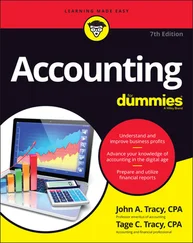Other than depreciation, Exhibit 2.1includes just one broad, all-inclusive operating expenses line, “Selling, General, and Administrative Expenses.” A business has the option of disclosing two or more operating expenses, and many do. Marketing, promotional, and selling expenses often are separated from general and administration expenses. The level of detail for expenses in income statements is flexible; financial reporting standards are somewhat loose on this point.
The sales revenue and expenses reported in income statements follow generally accepted conventions, which we briefly summarize here:
Sales revenue: The total amount received or to be received from the sales of products (and/or services) to customers during the period. Sales revenue is net, which means that discounts off list prices, prompt payment discounts, sales returns, and any other deductions from original sales prices are deducted to determine the sales revenue amount for the period. Sales taxes are not included in sales revenue, nor are excise taxes that might apply. In short, sales revenue is the amount the business should receive to cover its expenses and to provide profit (bottom-line net income).
Cost of goods sold expense: The total cost of goods (products) sold to customers during the period. This is clear enough. What might not be so clear, however, is the expense of goods that were shoplifted or are otherwise missing, and write-downs due to damage and obsolescence. The cost of such inventory shrinkage may be included in cost of goods sold expense for the year (or, this cost may be put in another expense account instead).
Selling, general, and administrative expenses (operating expenses): Broadly speaking, every expense other than cost of goods sold, interest, and income tax. This broad category is a catchall for every expense not reported separately. In our example, depreciation is broken out as a separate expense instead of being included with other operating expenses. Some companies report advertising and marketing costs separately from administrative and general costs, and some report research and development expenses separately. There are hundreds, even thousands, of specific operating expenses, some rather large and some very small. They range from salaries and wages of employees (large) to legal fees (small, one hopes).
Depreciation expense: The portions of original costs of long-term assets including buildings, machinery, equipment, tools, furniture, computers, and vehicles that is recorded to expense in one period. Depreciation is the “charge” for using these so-called fixed assets during the period. This expense amount is not a cash outlay in the period recorded, which makes it a unique expense compared with other operating expenses.
Interest expense: The amount of interest on debt (interest-bearing liabilities) for the period. Other types of financing charges may also be included, such as loan origination fees.
Income tax expense: The total amount due to the government (both federal and state) on the amount of taxable income of the business during the period. Taxable income is multiplied by the appropriate tax rates. The income tax expense does not include other types of taxes, such as unemployment and Social Security taxes on the company’s payroll. These other, non-income taxes are included in operating expenses.
A business may present a two- or three-year comparative income statement in its financial report. Indeed, public corporations are required to provide historical information. We need only one year to explain the income statement.
Reporting Financial Condition: The Balance Sheet
The balance sheet shown in Exhibit 2.2follows the standardized format regarding the classification and ordering of assets, liabilities, and ownership interests in the business. Financial institutions, public utilities, railroads, and other specialized businesses use somewhat different balance sheet layouts. However, manufacturers and retailers, as well as the large majority of various types of businesses, follow the format presented in Exhibit 2.2.
The left side of the balance sheet lists assets . The right side of the balance sheet first lists the liabilities of the business, which have a higher-order claim on the assets. The sources of ownership (equity) capital in the business are presented below the liabilities. This is to emphasize that the owners or equity holders in a business (the stockholders of a business corporation) have a secondary and lower-order claim on the assets—after its liabilities are satisfied.
Roughly speaking, a balance sheet lists assets in their order of nearness to cash . Cash is listed first at the top of the assets. Next, receivables that will be collected in the short run are listed, and so on down the line. (In later chapters, we say much more about the cash characteristics of different assets.) Liabilities are presented in the sequence of their nearness to payment. (We discuss this point as we go along in later chapters.)
Each separate asset, liability, and stockholders’ equity reported in a balance sheet is called an account . Every account has a name (title) and a dollar amount, which is called its balance . For instance, from Exhibit 2.2at the end of the most recent year we can determine:
| Name of Account |
Amount (Balance) of Account |
| Inventory |
$8,450,000 |
The other dollar amounts in the balance sheet are either subtotals or totals of account balances. For example, the $17,675,000 amount for “Current Assets” at the end of this year does not represent a single account but rather the subtotal of the four accounts making up this group of accounts. A line is drawn above a subtotal or total, indicating account balances are being added.
A double underline (such as for “Total Assets”) indicates the last amount in a column. Notice also the double underline below “Net Income” in the income statement ( Exhibit 2.1), indicating it is the last number in the column.
A balance sheet is prepared at the close of business on the last day of the income statement period. For example, if the income statement is for the year ending June 30, 2020, the balance sheet is prepared at midnight June 30, 2020. The amounts reported in the balance sheet are the balances of the accounts at that precise moment in time. The financial condition of the business is frozen for one split second. A business should be careful to make a precise and accurate cutoff to separate transactions between the period just ended and next period.
A balance sheet does not report the flows of activities in the company’s assets, liabilities, and shareowners’ equity accounts during the period. Only the ending balances at the moment the balance sheet is prepared are reported for the accounts. For example, the company reports an ending cash balance of $3,265,000 at the end of its most recent year (see again Exhibit 2.2). Can you tell the total cash inflows and outflows for the year? No, not from the balance sheet; you can’t even get a clue from the balance sheet alone.
A balance sheet can be presented in the landscape (horizontal) layout mode as shown in Exhibit 2.2, or in the portrait (vertical) layout. The accounts reported in the balance sheet are not thrown together haphazardly in no particular order. According to long-standing rules, balance sheet accounts are subdivided into the following classes, or basic groups, in the following order of presentation:
| Left Side (or Top Section) |
Right Side (or Bottom Section) |
| Current assets |
Current liabilities |
| Long-term operating assets |
Long-term liabilities |
| Other assets |
Owners’ equity |
Current assets are cash and other assets that will be converted into cash during one operating cycle . The operating cycle refers to the sequence of buying or manufacturing products, holding the products until sale, selling the products, waiting to collect the receivables from the sales, and finally receiving cash from customers. This sequence is the most basic rhythm of a company’s operations; it is repeated over and over. The operating cycle may be short, 60 days or less, or it may be relatively long, taking 180 days or more.
Читать дальше












